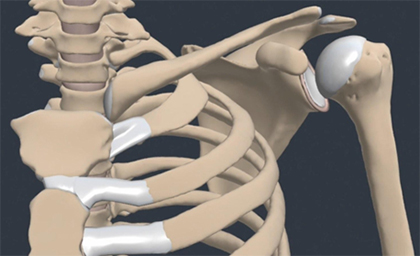
For young, active people, a first-time shoulder dislocation can be frustrating—and scary. What’s even more concerning is how likely it is to happen again without treatment. In a study reviewed by Dr. Okoroha’s colleagues, researchers compared two paths after a shoulder dislocation: immediate surgery versus a “wait and see” approach. Their findings may help patients better understand the long-term pros and cons of each option.
Study Highlights
Patient Demographics:
This review included 348 patients with a first-time anterior shoulder dislocation, with an average age of 23.7 years. All were part of randomized controlled trials—considered the gold standard in clinical research.
Follow-ups:
Researchers tracked outcomes over both short-term (2–3 years) and long-term (5–12 years) periods. This gave a full picture of how each treatment held up over time.
Positive Outcomes:
Patients who had early surgery were far less likely to experience another shoulder dislocation in both the short and long term. While return-to-sport rates were similar between both groups, those who had surgery reported higher long-term satisfaction and better shoulder function scores.
Conclusion
If you’ve dislocated your shoulder for the first time, early surgery like Bankart repair may help prevent future injuries and reduce the need for additional procedures. While it might not guarantee a faster return to sports, it can offer more peace of mind and better shoulder function over time. Talk to your doctor about what option makes the most sense for your lifestyle and goals.
At Mayo Clinic, located in Minneapolis, Minnesota, we are committed to providing personalized care and innovative treatments to help athletes reach their full potential. To learn more about shoulder dislocation, shoulder instability, shoulder labral tears, and shoulder labral repair, schedule a consultation with Dr. Okoroha today. Seeing patients ensures that athletes receive specialized care aimed at maximizing their athletic performance and long-term shoulder health.










